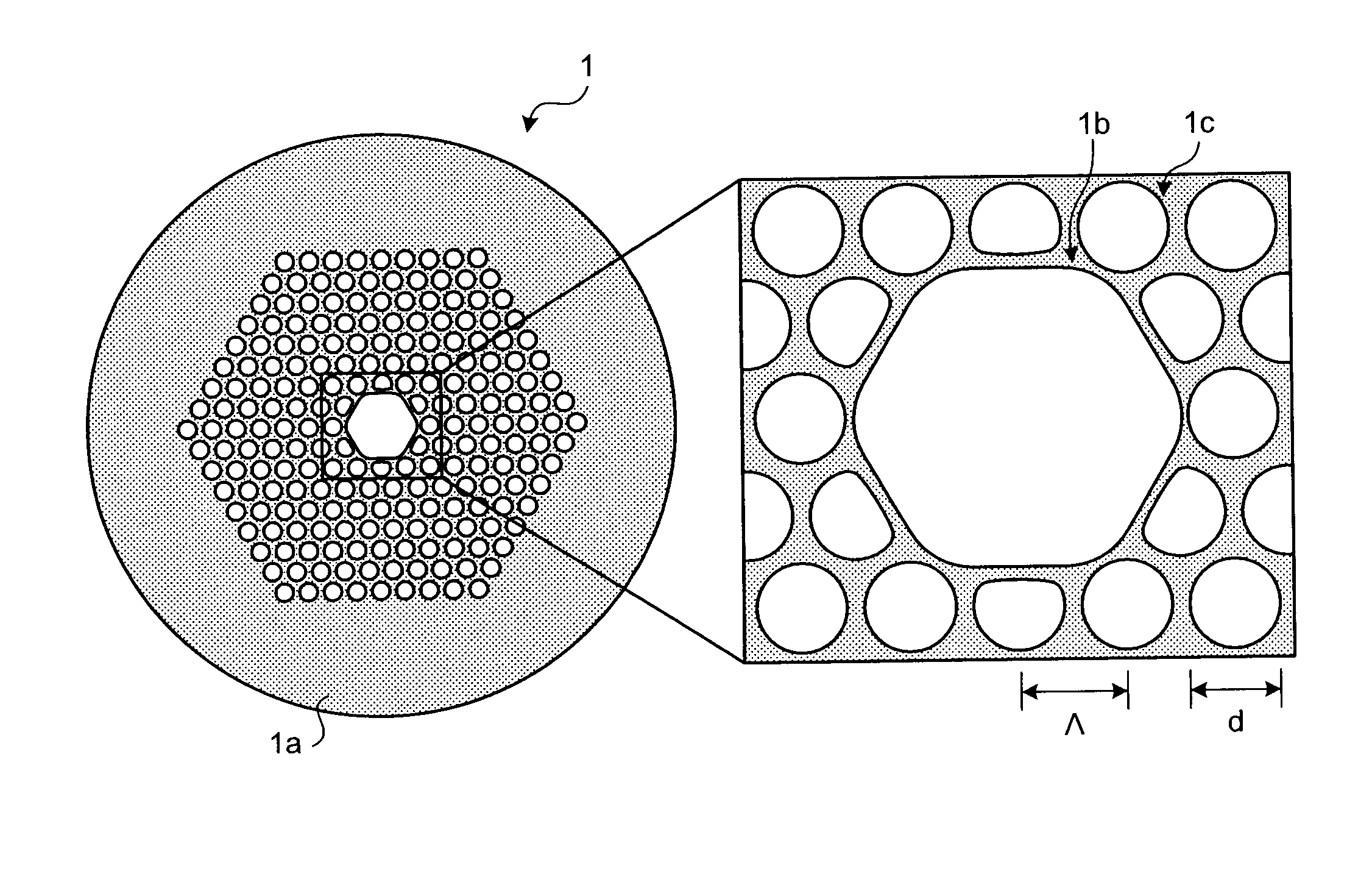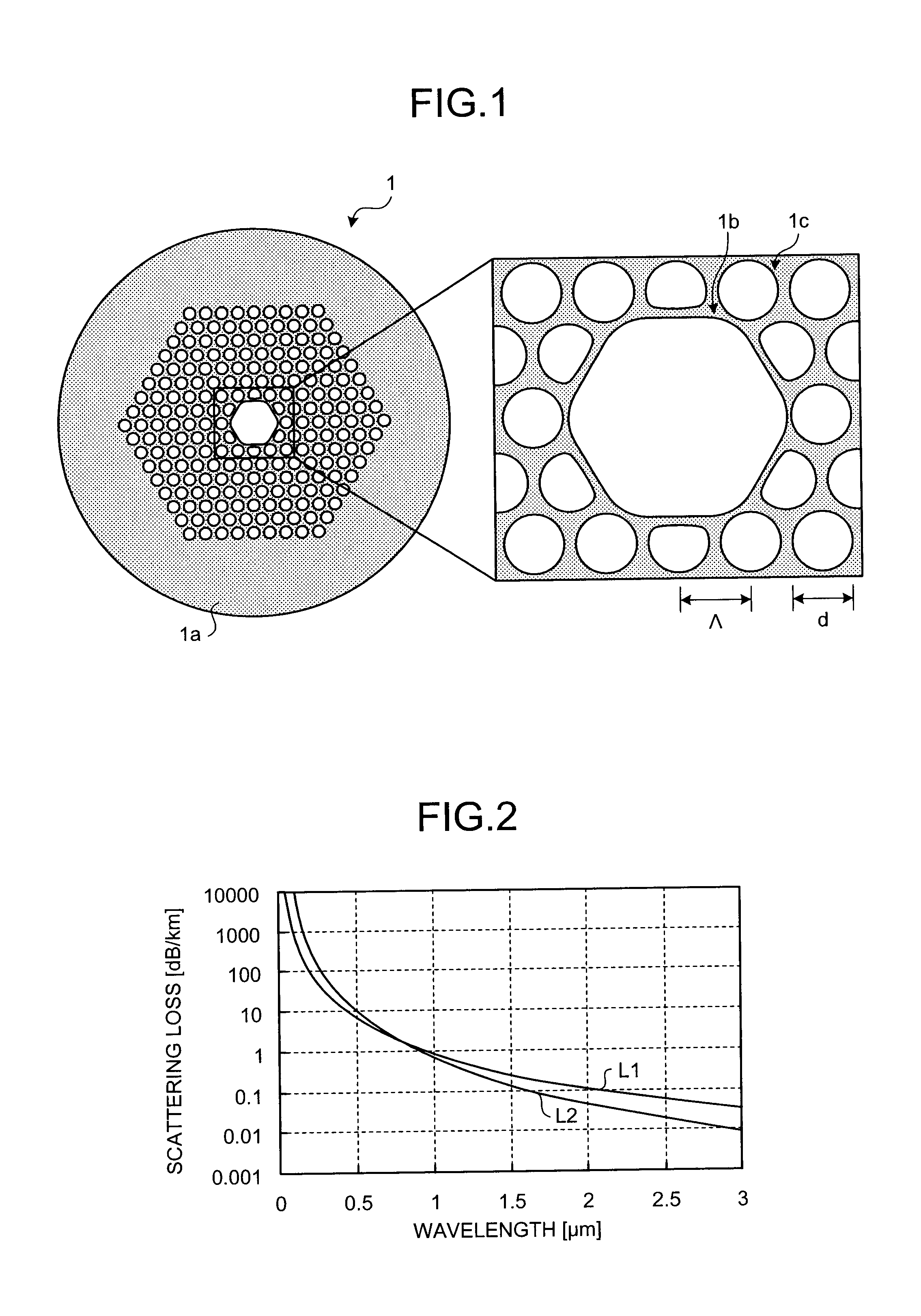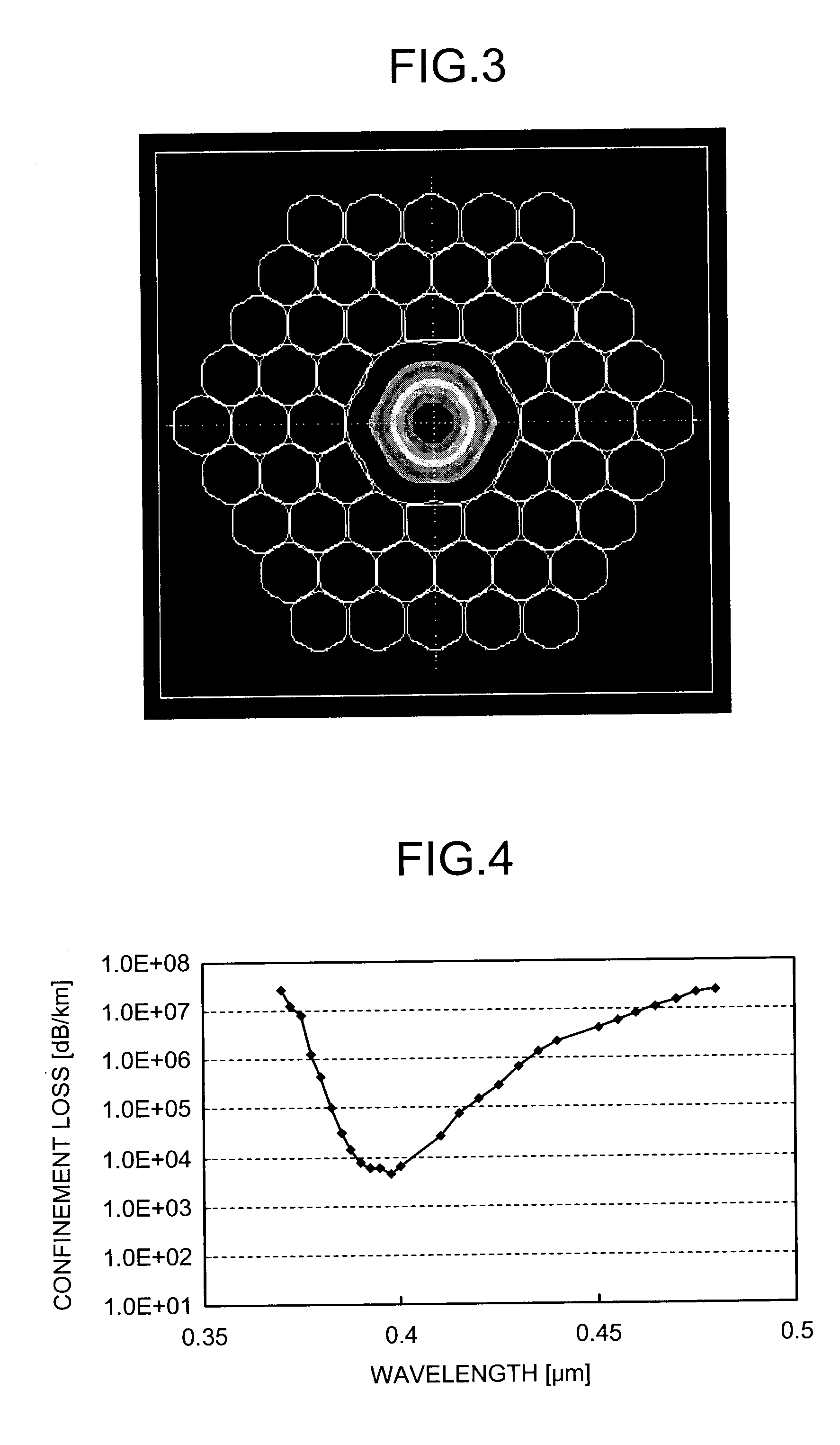Photonic bandgap fiber
a bandgap fiber and bandgap technology, applied in the field of photonic bandgap fibers, can solve the problems of limited optical waveguide distance, high transmission loss of current silica-based optical fibers, and even higher transmission loss of plastic optical fibers
- Summary
- Abstract
- Description
- Claims
- Application Information
AI Technical Summary
Benefits of technology
Problems solved by technology
Method used
Image
Examples
Embodiment Construction
[0020]Exemplary embodiments of a photonic bandgap fiber according to the present invention are explained in detail below. It is noted that the present invention is not limited by the embodiments. Hereinafter, the photonic bandgap fiber is referred to as a PBGF. The ultraviolet to visible range indicates a wavelength of 0.2 μm to 0.8 μm.
[0021]FIG. 1 is a schematic cross section and an enlarged center area of a PBGF 1 according to an embodiment of the present invention. The PBGF 1 transmits a light having a wavelength of 0.4 μm with low loss. As shown in FIG. 1, the PBGF 1 includes a hollow core 1b for propagating a light formed along the center axis of the PBGF 1 and a cladding region 1a formed around the hollow core 1b. The cladding region 1a is formed with air holes 1c periodically arranged in silica glass and the silica glass covering the periphery of the air holes 1c. The periphery of the cladding region 1a is provided with a coating (not shown) made of UV-curing resin or the lik...
PUM
 Login to View More
Login to View More Abstract
Description
Claims
Application Information
 Login to View More
Login to View More - R&D
- Intellectual Property
- Life Sciences
- Materials
- Tech Scout
- Unparalleled Data Quality
- Higher Quality Content
- 60% Fewer Hallucinations
Browse by: Latest US Patents, China's latest patents, Technical Efficacy Thesaurus, Application Domain, Technology Topic, Popular Technical Reports.
© 2025 PatSnap. All rights reserved.Legal|Privacy policy|Modern Slavery Act Transparency Statement|Sitemap|About US| Contact US: help@patsnap.com



